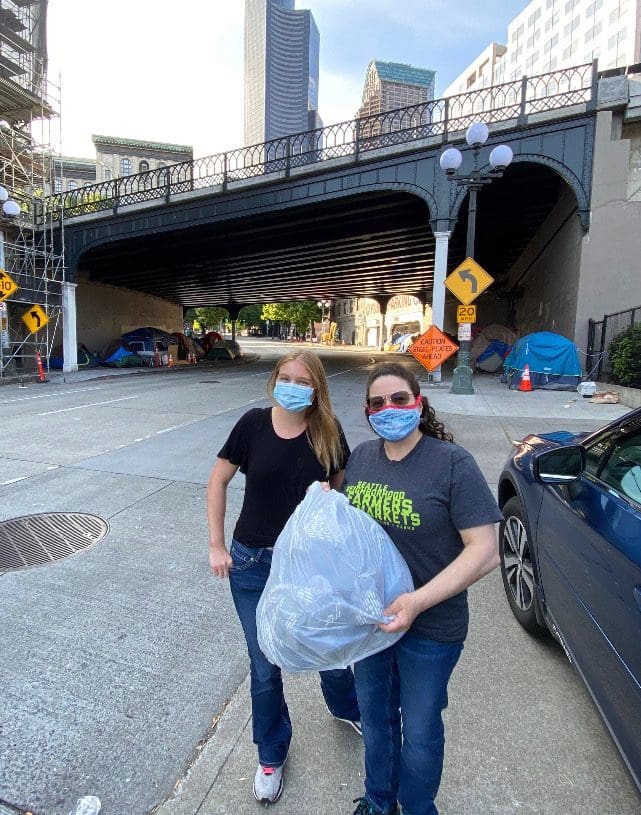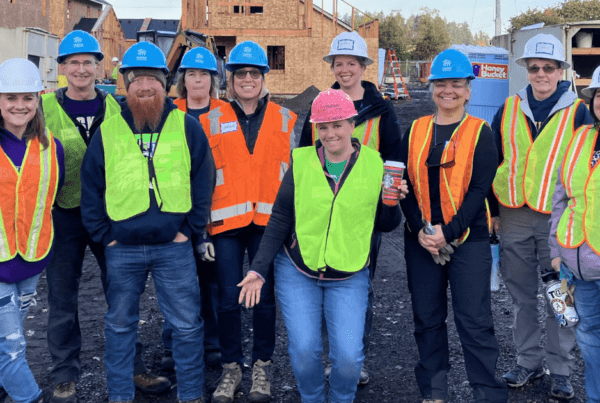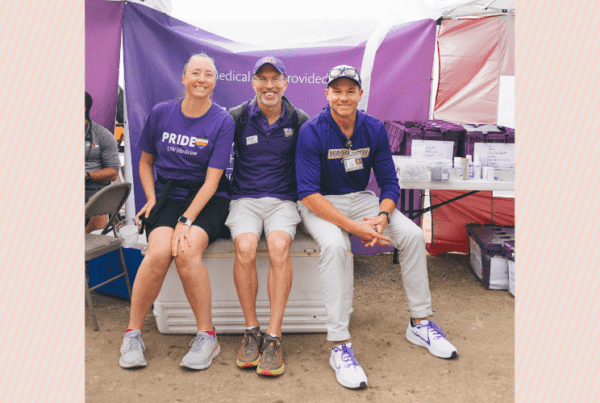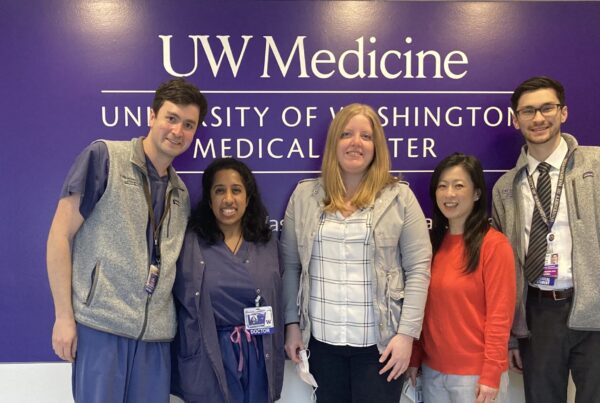Highlights | New homes and less waste
- Dana Scharfenberg created a sock drive program to donate gently used hospital socks to people without housing.
- The sock drive is year–long and collects as many as around 200 pairs each week.
- Socks are one of the most frequently requested items for people in shelters.
Dana Scharfenberg, MN, RN, who works in the post-anesthesia care unit at UW Medical Center – Montlake, was only six months into her nursing position at the hospital when she noticed that most patients weren’t going home with their hospital socks, and the socks were then going to a landfill.
As a former bio environmentalist for the Air Force and a current nurse, Scharfenberg saw the opportunity to combine her two passions: reducing unnecessary waste and serving communities in need.
“I noticed we had a lot of patients who go home after wearing the socks for only a few hours,” Scharfenberg says. “Most of the patients want to throw them away or didn’t want to keep them. I realized that I can stop those socks from going in the landfill by donating them.”
The process behind the sock drive
After seeing the problem and successfully pitching the solution, Scharfenberg partnered with the Union Gospel Mission to distribute the lightly used socks to people without housing.
There are two collection bins, one in the surgery pavillion and one in the main hospital. Scharfenberg encouraged her colleagues to put the used, reusable socks into the bins rather than throwing them away. She says it was an easy sell: Many of her colleagues enthusiastically participated, motivated by the opportunity to help others in need.
“Before we throw them away, we tell the patients that they can take the socks with them or leave them behind for us to clean and give to the those without housing,” Scharfenberg says. “Many of them say they definitely want to donate them, often mentioning how excited they are about the idea.”
Scharfenberg is intentional to credit the great amount of support she’s received from the hospital staff, noting that most of the people who collect the socks and put them in the bin are the medical assistants and patient care techs.
“They’re oftentimes the unsung heroes of the things that we do,” she says. “I’m also grateful for my boss for allowing me to do this. I feel like it’s the right thing to do for our environment and vulnerable community.”
All of the socks intended for donation are usually used for less than 24 hours, and Scharfenberg mentions she is careful to wash the socks in bleach and ensure they are as clean as possible before giving them a new home.

Dana Scharfenberg and Ansley Roman distributing socks in downtown Seattle.
The widespread community impact
It has been over three years since Scharfenberg launched the sock drive, and it has had no small impact.
“Every week, I’m able to take home and wash about one to two bags full of socks, with about 70 to 100 pairs in each bag,” Scharfenberg says. “But it’s not just delivering socks. It’s also a moment of meaningful interaction with this community.”
In addition to the socks, Scharfenberg and her colleagues will also take surgical bras that don’t fit patients correctly and wash them and take them to the shelters as well. Bras are also highly requested items, and it’s an opportunity to help women in need.
Because of her contributions to the UW Medicine community, the houseless community, the environment and her volunteer work as the 2019-2020 president of the Puget Sound Oncology Nursing Society, Scharfenberg recently received the Hometown Hero Award at the Seattle Mariners game on Aug. 26.


